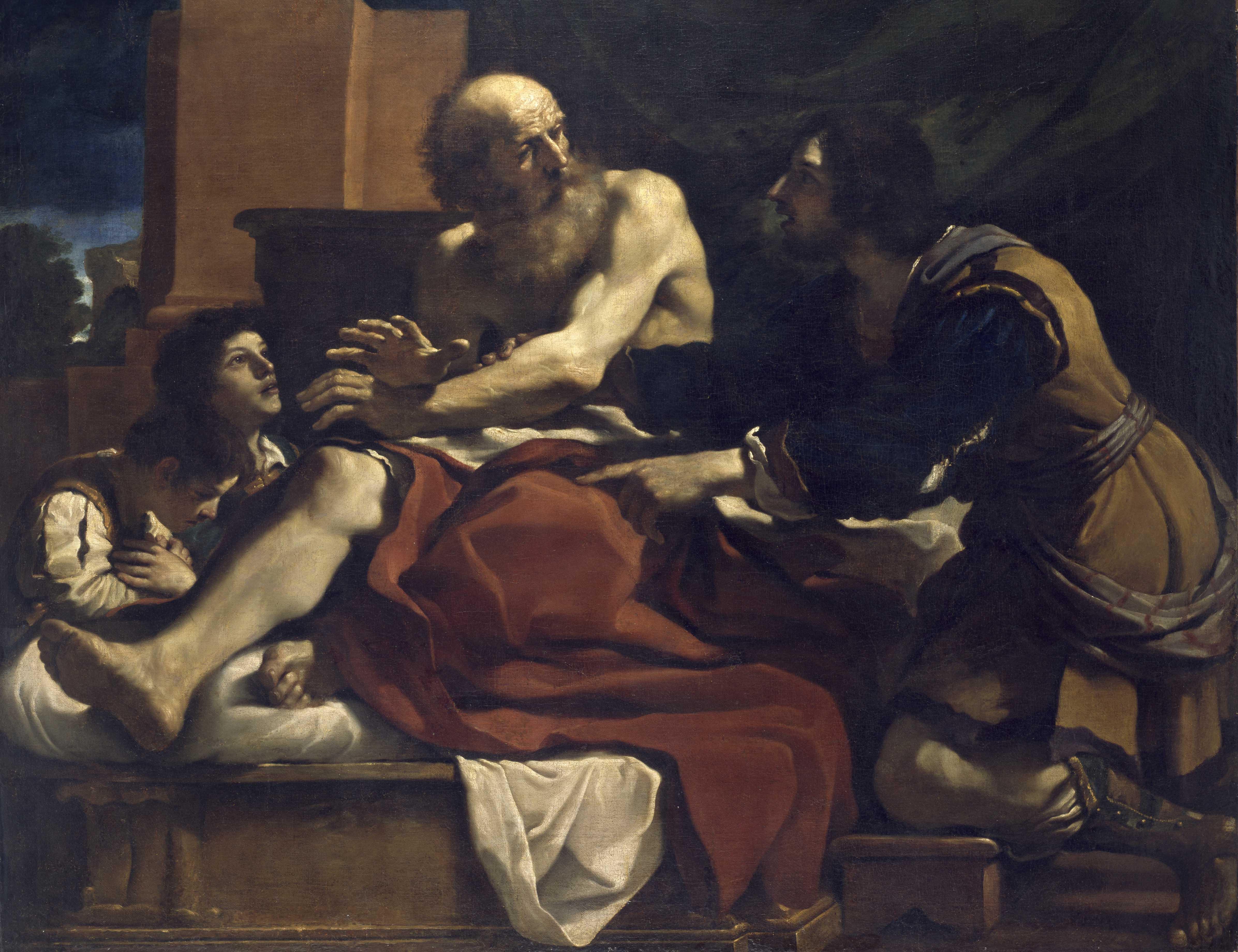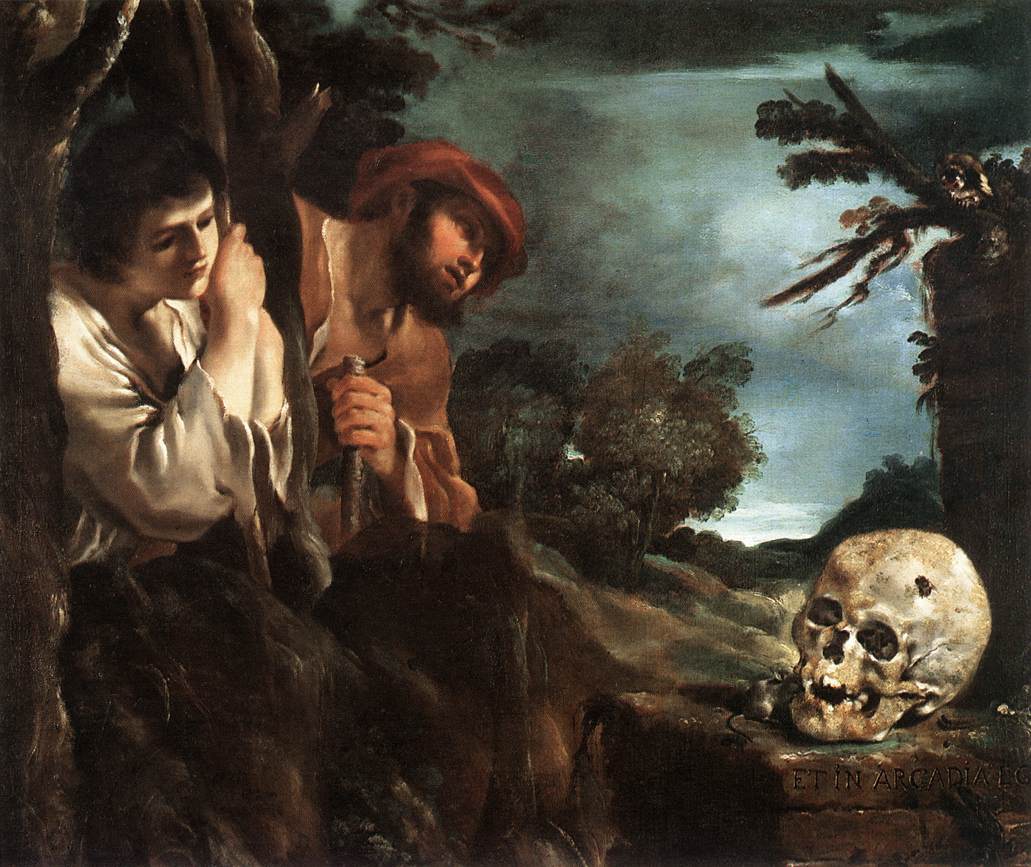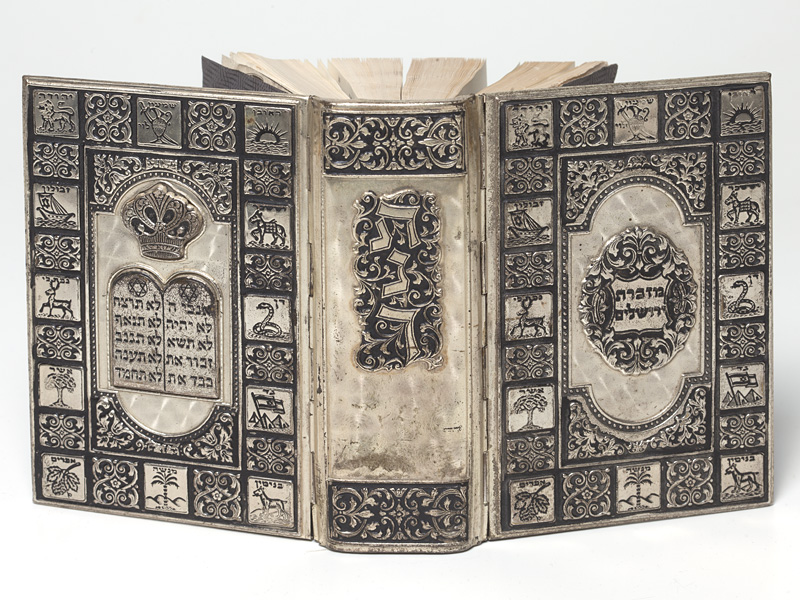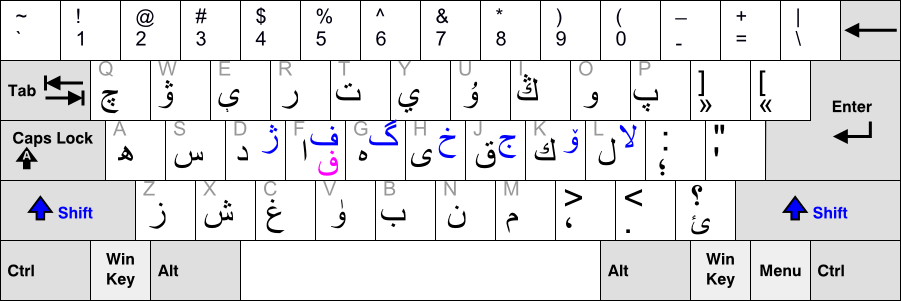|
Vayechi
Vaychi, Vayechi or Vayhi (—Hebrew for "and he lived," the first word of the parashah) is the twelfth weekly Torah portion (, ''parashah'') in the annual Jewish cycle of Torah reading and the last in the Book of Genesis. It constitutes Genesis 47:28–50:26. The parashah tells of Jacob's request for burial in Canaan, Jacob's blessing of Joseph's sons Ephraim and Manasseh, Jacob's blessing of his sons, Jacob's death and burial, and Joseph's death. It is the shortest weekly Torah portion in the Book of Genesis (although not in the Torah). It is made up of 4,448 Hebrew letters, 1,158 Hebrew words, 85 verses, and 148 lines in a Torah scroll. Jews read it the twelfth Sabbath after Simchat Torah, generally in December or January. Readings In traditional Sabbath Torah reading, the parashah is divided into seven readings, or , '' aliyot''. In the Masoretic Text of the Tanakh (Hebrew Bible), Parashat Vayechi has 12 "open portion" (, ''petuchah'') divisions (roughly equivalent to par ... [...More Info...] [...Related Items...] OR: [Wikipedia] [Google] [Baidu] [Amazon] |
Parashah
The term ''parashah'', ''parasha'' or ''parashat'' ( ''Pārāšâ'', "portion", Tiberian Hebrew, Tiberian , Sephardi Hebrew, Sephardi , plural: ''parashot'' or ''parashiyot'', also called ''parsha'') formally means a section of a biblical book in the Masoretic Text of the Tanakh (Hebrew Bible). In common usage today the word often refers to the weekly Torah portion (a shortened form of ''Parashat HaShavua''). This article deals with the first, formal meaning of the word. In the Masoretic Text, ''parashah'' sections are designated by various types of spacing between them, as found in Torah scrolls, scrolls of the books of Nevi'im or Ketuvim (especially the five megillot, Megillot), masoretic codex, codices from the Middle Ages and printed editions of the masoretic text. The division of the text into ''parashot'' for the biblical books is independent of Chapters and verses of the Bible, chapter and verse numbers, which are not part of the masoretic tradition. ''Parashot'' are not ... [...More Info...] [...Related Items...] OR: [Wikipedia] [Google] [Baidu] [Amazon] |
Book Of Genesis
The Book of Genesis (from Greek language, Greek ; ; ) is the first book of the Hebrew Bible and the Christian Old Testament. Its Hebrew name is the same as its incipit, first word, (In the beginning (phrase), 'In the beginning'). Genesis purports to be an account of the Genesis creation narrative, creation of the world, the early history of humanity, and the Jews#Origins, origins of the Jewish people. In Judaism, the theological importance of Genesis centers on the covenants linking God in Judaism, God to his chosen people and the people to the Promised Land. Genesis is part of the Torah or Pentateuch, the first five books of the Bible. Tradition credits Moses as the Torah's author. However, there is scholarly consensus that the Book of Genesis was composed several centuries later, after the Babylonian captivity, Babylonian Babylonian captivity, captivity, possibly in the fifth century BC. Based on the scientific interpretation of Archaeology, archaeological, Genetics, genetic, ... [...More Info...] [...Related Items...] OR: [Wikipedia] [Google] [Baidu] [Amazon] |
Joseph (Genesis)
Joseph (; ) is an important Hebrews, Hebrew figure in the Bible's Book of Genesis. He was the first of the two sons of Jacob and Rachel (Jacob's twelfth named child and eleventh son). He is the founder of the Tribe of Joseph among the Israelites. His story functions as an explanation for Israel's residence in Egypt. He is the favourite son of the patriarch Jacob, and his envious brothers sell him into slavery in Biblical Egypt, where he eventually ends up incarcerated. After correctly interpreting the dreams of Pharaohs in the Bible, Pharaoh, he rises to vizier (Ancient Egypt), second-in-command in Egypt and saves Egypt during a famine. Jacob's family travels to Egypt to escape the famine, and it is through him that they are given leave to settle in the Land of Goshen (the eastern part of the Nile Delta). Scholars hold different opinions about the historical background of the Joseph story, as well as the date and development of its composition. Some scholars suggest that the bibli ... [...More Info...] [...Related Items...] OR: [Wikipedia] [Google] [Baidu] [Amazon] |
Guercino Jacob Ephraim And Manasseh
Giovanni Francesco Barbieri (February 8, 1591 – December 22, 1666),Miller, 1964 better known as (il) Guercino (), was an Italian Baroque painter and draftsman from Cento in the Emilia-Romagna, Emilia region, who was active in Rome and Bologna. The vigorous naturalism of his early manner contrasts with the classical equilibrium of his later works. His many drawings are noted for their luminosity and lively style. Biography Giovanni Francesco Barbieri was born into a family of peasant farmers in Cento, a town in the Po Valley mid-way between Bologna and Ferrara.Mahon, 1937a Being Strabismus, cross-eyed, at an early age he acquired the nickname by which he is universally known, Guercino (a diminutive of the Italian noun , meaning 'squinter').Turner, 2003 Mainly self-taught, at the age of 16, he worked as apprentice in the shop of Benedetto Gennari, a painter of the Bolognese School (painting), Bolognese School. An early commission was for the decoration with frescoes (1615–1 ... [...More Info...] [...Related Items...] OR: [Wikipedia] [Google] [Baidu] [Amazon] |
Masoretic Text
The Masoretic Text (MT or 𝕸; ) is the authoritative Hebrew and Aramaic text of the 24 books of the Hebrew Bible (''Tanakh'') in Rabbinic Judaism. The Masoretic Text defines the Jewish canon and its precise letter-text, with its vocalization and accentuation known as the ''masora''. Referring to the Masoretic Text, ''masora'' specifically means the diacritic markings of the text of the Jewish scriptures and the concise marginal notes in manuscripts (and later printings) of the Tanakh which note textual details, usually about the precise spelling of words. It was primarily copied, edited, and distributed by a group of Jews known as the Masoretes between the 7th and 10th centuries of the Common Era (CE). The oldest known complete copy, the Leningrad Codex, dates to 1009 CE and is recognized as the most complete source of biblical books in the Ben Asher tradition. It has served as the base text for critical editions such as Biblia Hebraica Stuttgartensia and Adi. The d ... [...More Info...] [...Related Items...] OR: [Wikipedia] [Google] [Baidu] [Amazon] |
Tanakh
The Hebrew Bible or Tanakh (;"Tanach" . ''''. ; ; or ), also known in Hebrew as (; ), is the canonical collection of scriptures, comprising the (the five Books of Moses), the |
Hebrew Bible
The Hebrew Bible or Tanakh (;"Tanach" . '' Random House Webster's Unabridged Dictionary''. ; ; or ), also known in Hebrew as (; ), is the canonical collection of scriptures, comprising the Torah (the five Books of Moses), the Nevi'im (the Books of the Prophets), and the [...More Info...] [...Related Items...] OR: [Wikipedia] [Google] [Baidu] [Amazon] |
Pe (Semitic Letter)
Pe is the seventeenth Letter (alphabet), letter of the Semitic abjads, including Arabic alphabet, Arabic ''fāʾ'' , Aramaic alphabet, Aramaic ''pē'' 𐡐, Hebrew alphabet, Hebrew ''pē'' , Phoenician alphabet, Phoenician ''pē'' 𐤐, and Syriac alphabet, Syriac ''pē'' ܦ. (in abjadi order). It is related to the Ancient North Arabian 𐪐, Ancient South Arabian script, South Arabian , and Geʽez script, Ge'ez . The original sound value is a voiceless bilabial plosive and it retains this value in most Semitic languages, except for Arabic, where the sound changed into the voiceless labiodental fricative , carrying with it the pronunciation of the letter. However, the sound in Arabic is used in loanwords with the letter ''pe (Persian letter), pe'' as an alternative. Under the Persian influence, many Arabic dialects in the Persian Gulf, as well as in Egyptian Arabic, Egypt and in some of the Maghreb under the Ottoman influence uses the letter ''pe'' to represent the sound wh ... [...More Info...] [...Related Items...] OR: [Wikipedia] [Google] [Baidu] [Amazon] |
Samekh
Samekh or samech is the fifteenth Letter (alphabet), letter of the Semitic abjads, including Phoenician alphabet, Phoenician ''sāmek'' 𐤎, Hebrew alphabet, Hebrew ''sāmeḵ'' , Aramaic alphabet, Aramaic ''samek'' 𐡎, and Syriac alphabet, Syriac ''semkaṯ'' ܣ. Arabic script, Arabic sīn س represents samekh, but there is no surviving descendant of samekh in the arabic alphabet. However, it was present in the Nabataean alphabet, the Arabic alphabet's immediate predecessor, as the letter ''simkath'' , which was related to the Ancient North Arabian 𐪏 and Ancient South Arabian script, South Arabian . The gematria, numerical value of samekh is 60. Samekh represents a voiceless alveolar fricative . In the Hebrew language, the samekh has the same pronunciation as the left-dotted Shin (letter)#Hebrew shin/sin, shin . Origin The Phoenician letter may continue a glyph from the Middle Bronze Age alphabets, possibly based on a Egyptian hieroglyphs, hieroglyph for a tent ... [...More Info...] [...Related Items...] OR: [Wikipedia] [Google] [Baidu] [Amazon] |
ArtScroll
ArtScroll is an imprint of translations, books and commentaries from an Orthodox Jewish perspective published by Mesorah Publications, Ltd., a publishing company based in Rahway, New Jersey. Rabbi Nosson Scherman is the general editor. ArtScroll's first president, Rabbi Meir Zlotowitz (July 13, 1943 – June 24, 2017) was succeeded by his oldest son, Rabbi Gedaliah Zlotowitz, whose name is listed secondarily in new publications as general editor, after that of Rabbi Scherman. History In 1975, Rabbi Meir Zlotowitz, a graduate of Mesivtha Tifereth Jerusalem, was director of a high-end graphics studio in New York. The firm, ArtScroll Studios, produced ketubot, brochures, invitations, and awards. Rabbi Nosson Scherman, then principal of Yeshiva Karlin Stolin Boro Park, was approached by Zlotowitz who had helped him write copy for brochures and journals in the past, and they collaborated on a few projects. In late 1975, Zlotowitz wrote an English translation and commentary o ... [...More Info...] [...Related Items...] OR: [Wikipedia] [Google] [Baidu] [Amazon] |
Brooklyn
Brooklyn is a Boroughs of New York City, borough of New York City located at the westernmost end of Long Island in the New York (state), State of New York. Formerly an independent city, the borough is coextensive with Kings County, one of twelve original counties established under English rule in 1683 in what was then the Province of New York. As of the 2020 United States census, the population stood at 2,736,074, making it the most populous of the five boroughs of New York City, and the most populous Administrative divisions of New York (state)#County, county in the state.Table 2: Population, Land Area, and Population Density by County, New York State - 2020 New York State Department of Health. Accessed January 2, 2024. [...More Info...] [...Related Items...] OR: [Wikipedia] [Google] [Baidu] [Amazon] |
Rembrandt Harmensz
Rembrandt Harmenszoon van Rijn (; ; 15 July 1606 – 4 October 1669), mononymously known as Rembrandt was a Dutch Golden Age painter, printmaker, and draughtsman. He is generally considered one of the greatest visual artists in the history of Western art.Gombrich, p. 420. It is estimated that Rembrandt's surviving works amount to about three hundred paintings, three hundred etchings and several hundred drawings. Unlike most Dutch painters of the 17th century, Rembrandt's works depict a wide range of styles and subject matter, from portraits and self-portraits to landscapes, genre scenes, allegorical and historical scenes, biblical and mythological subjects and animal studies. His contributions to art came in a period that historians call the Dutch Golden Age. Rembrandt never went abroad but was considerably influenced by the work of the Italian Old Masters and Dutch and Flemish artists who had studied in Italy. After he achieved youthful success as a portrait ... [...More Info...] [...Related Items...] OR: [Wikipedia] [Google] [Baidu] [Amazon] |










